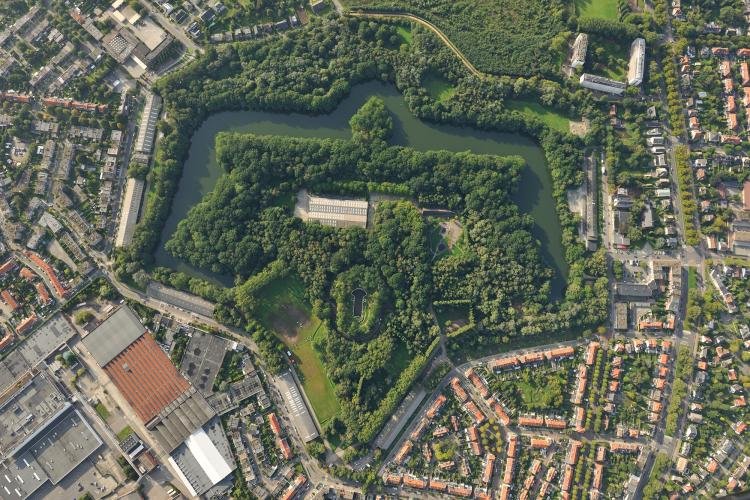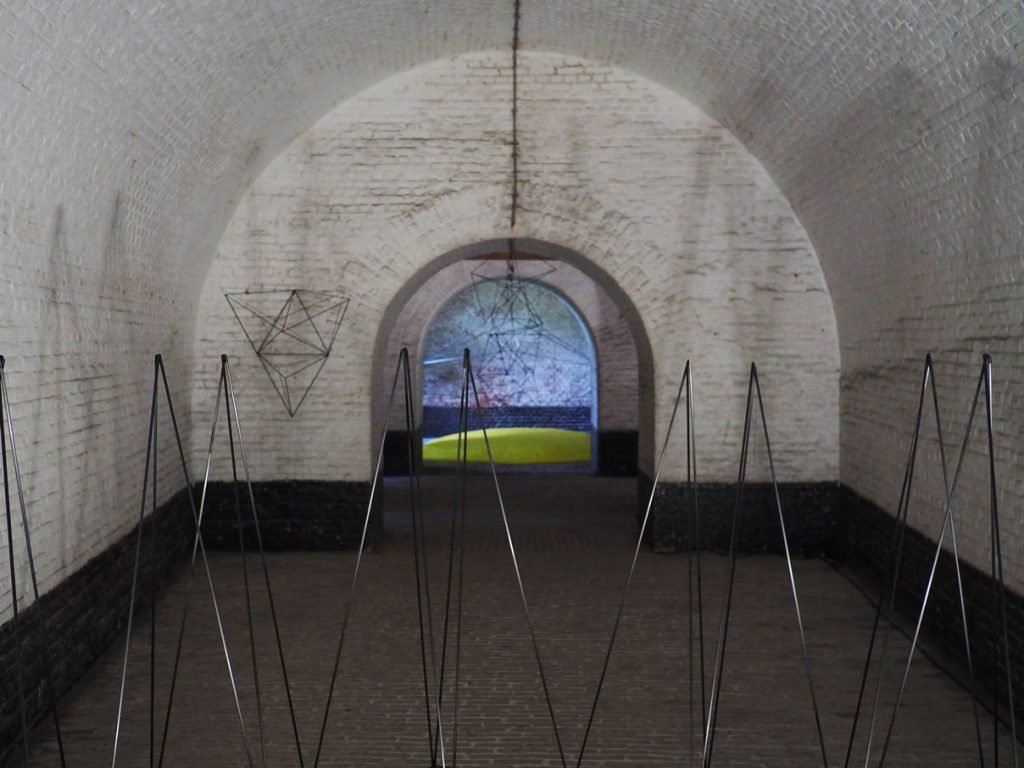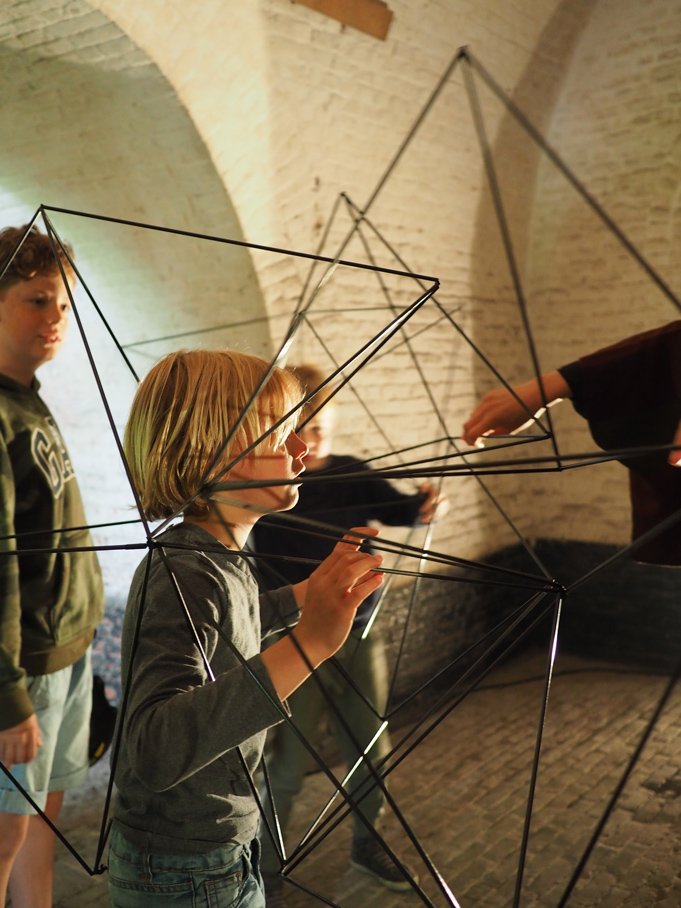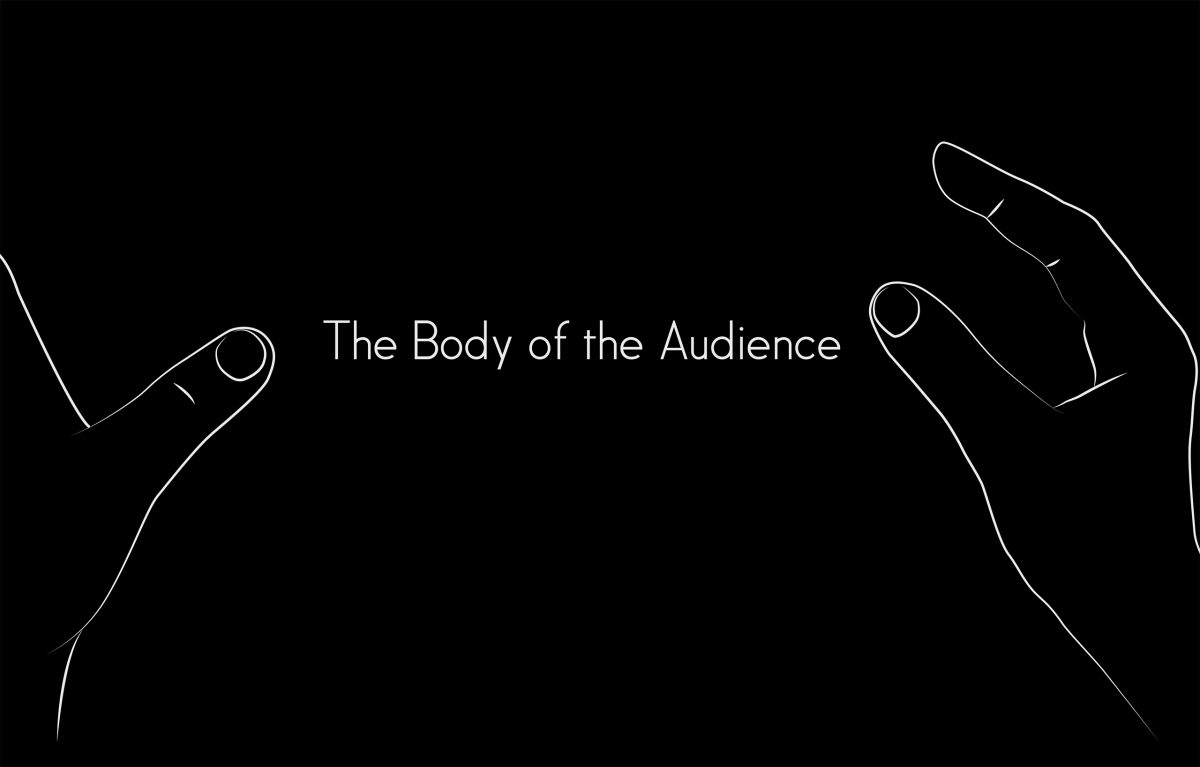Site specific work for Fort 5, presented during Fort Visions festival, in Edegem, Belgium, 19th May 2019

Appropriating the context of the historical site, a fortress built in 1859 as part of the ring of Antwerp — and rendered obsolete from the moment of its inauguration — the work reflects on the performativity of warfare, inviting the audience to witness a break of expectation and surrender to a sensual encounter with the architecture.

The word nhemu (from indigenous Brazilian language Tupi) means ‘peace treaty’ or ‘agreement for peace’.

This ritual of disarmament involves three stages of experience, in which the visitor is guided through the space. First, the visitor encounters a sober entrance, a visual barrier and fence that they must cross. As the visitor walks to the next chamber, they are received by the host and offered a wearable structure, something that oscillates between an exoskeleton and a crown. They spend time. Lastly, the visitor is brought to another space, filled with daylight. They are invited to lie down and rest on an inflating object. There, in a horizontal position, feeling the stone ground of the fortress behind their back, they are disarmed.

The first stage symbolizing a portal to a new world, one that is unknown, uncanny, perhaps threatening. The second stage is welcoming the visitor to the ritual: receiving the gift, belonging, making kin. The third stage represents a symbolic death, which involves lying down and meditating within the walls of the fort, while contemplating the structure which hangs from the ceiling. This stage turns out to be a soothing, pleasant experience, in spite the symbolism built up at the entrance of the work.

The work is completed by a generative soundscape composed by Mike Rijnierse and a smells-cape of ceder wood, that appeals to the historical character of the place.

With thanks to Fort Visions festival, Bram van Broeckhoven (ManufactuurCultuur) , Mike Rijinierse, Panita & Sauro and Vinícius Tamer.



